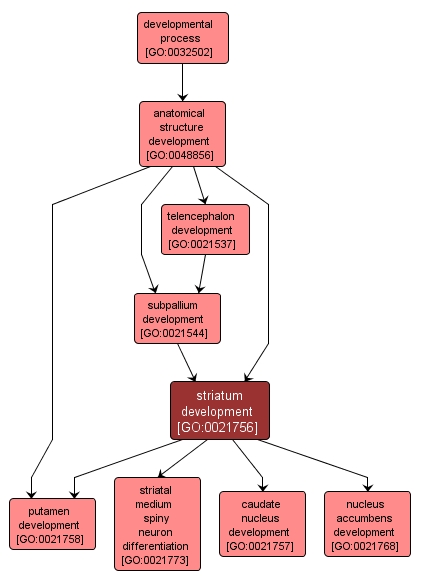GO TERM SUMMARY
|
| Name: |
striatum development |
| Acc: |
GO:0021756 |
| Aspect: |
Biological Process |
| Desc: |
The progression of the striatum over time from its initial formation until its mature state. The striatum is a region of the forebrain consisting of the caudate nucleus, putamen and fundus striati. |
Synonyms:
- neostriatum development
- striate nucleus development
|
|

|
INTERACTIVE GO GRAPH
|














